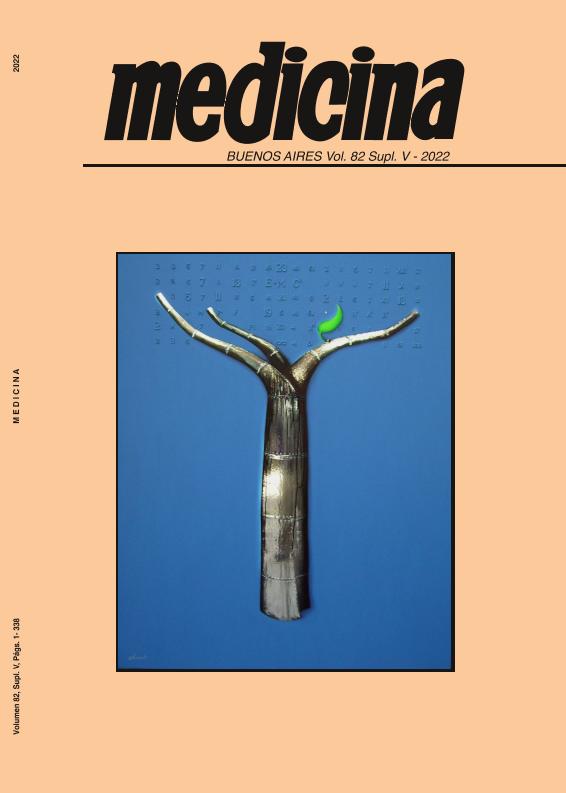Evento
Phospholipase D 1 and 2 inhibition prevents oxidative stress in retinal pigment epithelium cells exposed to high glucose levels
Colaboradores:
Alonso, Daniel Fernando ; Malchiodi, Emilio Luis
; Malchiodi, Emilio Luis ; Vila Petroff, Martin Gerarde
; Vila Petroff, Martin Gerarde ; Lamb, Caroline Ana
; Lamb, Caroline Ana
 ; Malchiodi, Emilio Luis
; Malchiodi, Emilio Luis ; Vila Petroff, Martin Gerarde
; Vila Petroff, Martin Gerarde ; Lamb, Caroline Ana
; Lamb, Caroline Ana
Tipo del evento:
Congreso
Nombre del evento:
Reunión Anual de Sociedades de Biociencias 2022: LXVII Reunión Anual de la Sociedad Argentina de Investigación Clínica; LXX Reunión Anual de la Sociedad argentina de inmunología; Reunión anual 2022 de la Sociedad Argentina de Fisiología
Fecha del evento:
16/11/2022
Institución Organizadora:
Sociedad Argentina de Investigación Clínica;
Sociedad Argentina de Inmunología;
Sociedad Argentina de Fisiología;
Título de la revista:
Medicina (Buenos Aires)
Editorial:
Fundación Revista Medicina
ISSN:
0025-7680
e-ISSN:
1669-9106
Idioma:
Inglés
Clasificación temática:
Resumen
Objective: Oxidative stress (OE) and inflammation are involved in the pathogenesis of several retinal diseases. We previously demonstrated that classical phospholipase D isoforms (PLD1 and 2) mediate the inflammatory response of retinal pigment epithelium (RPE) cells induced by high glucose (HG) levels. Furthermore, a significant increase in reactive oxygen species (ROS) was observed in RPE cells exposed to HG. The aim of the present work was to study the relationship between OE and PLD activation observed in HG- treated RPE cells. Methods: RPE cells (ARPE-19) were exposed to HG (33 mM) or to normal glucose levels (NG, 5.5 mM) for 24 h. To inhibit PLD1, PLD2 and cyclooxygenase-2 (COX-2) VU0359595 (PLD1i, 0.5 μM), VU0285655-1 (PLD2i, 0.5 μM) or celecoxib (10 μM) were used, respectively. ROS production was assessed using the probe DCDCDHF. Immunocytochemistry assays (ICC) and western blots were performed to evaluate nuclear factor erythroid 2–related factor2 (Nrf-2) pathway. Results: HG-exposure for 24 h increased ROS levels (148%) in ARPE-19 cells with respect to NG. The incubation with PLD1i and PLD2i prevented HG-induced ROS generation in RPE cells. On the contrary, the inhibition of COX-2 was not able to prevent OE induced by HG. ICC showed Nrf-2 nuclear translocation in cells exposed to HG and this effect was not observed when cells were pre-treated with PLD1i and PLD2i. Nrf-2 activation correlated with and increased heme oxygenase-1 (HO-1) expression (42%) in HG-exposed cells but no differences were observed in cells treated with PLD1i or PLD2i with respect to NG. Conclusions: Our results demonstrate that PLD1 and PLD2 inhibition not only prevents the inflammatory response of RPE cells, but also decreases OE generated in RPE cells exposed to HG in a Nrf-2 and COX-2 independent manner. Further experiments are needed to fully elucidate the mechanisms by which the PLD pathway mediates OE in RPE cells exposed to inflammatory injury.
Palabras clave:
PHOSPHOLIPASE D
,
RETINAL PIGMENT EPITHELIUM
,
OXIDATIVE STRESS
Archivos asociados
Licencia
Identificadores
Colecciones
Eventos(INIBIBB)
Eventos de INST.DE INVEST.BIOQUIMICAS BAHIA BLANCA (I)
Eventos de INST.DE INVEST.BIOQUIMICAS BAHIA BLANCA (I)
Citación
Phospholipase D 1 and 2 inhibition prevents oxidative stress in retinal pigment epithelium cells exposed to high glucose levels; Reunión Anual de Sociedades de Biociencias 2022: LXVII Reunión Anual de la Sociedad Argentina de Investigación Clínica; LXX Reunión Anual de la Sociedad argentina de inmunología; Reunión anual 2022 de la Sociedad Argentina de Fisiología; Mar de plata; Argentina; 2022; 307-307
Compartir



